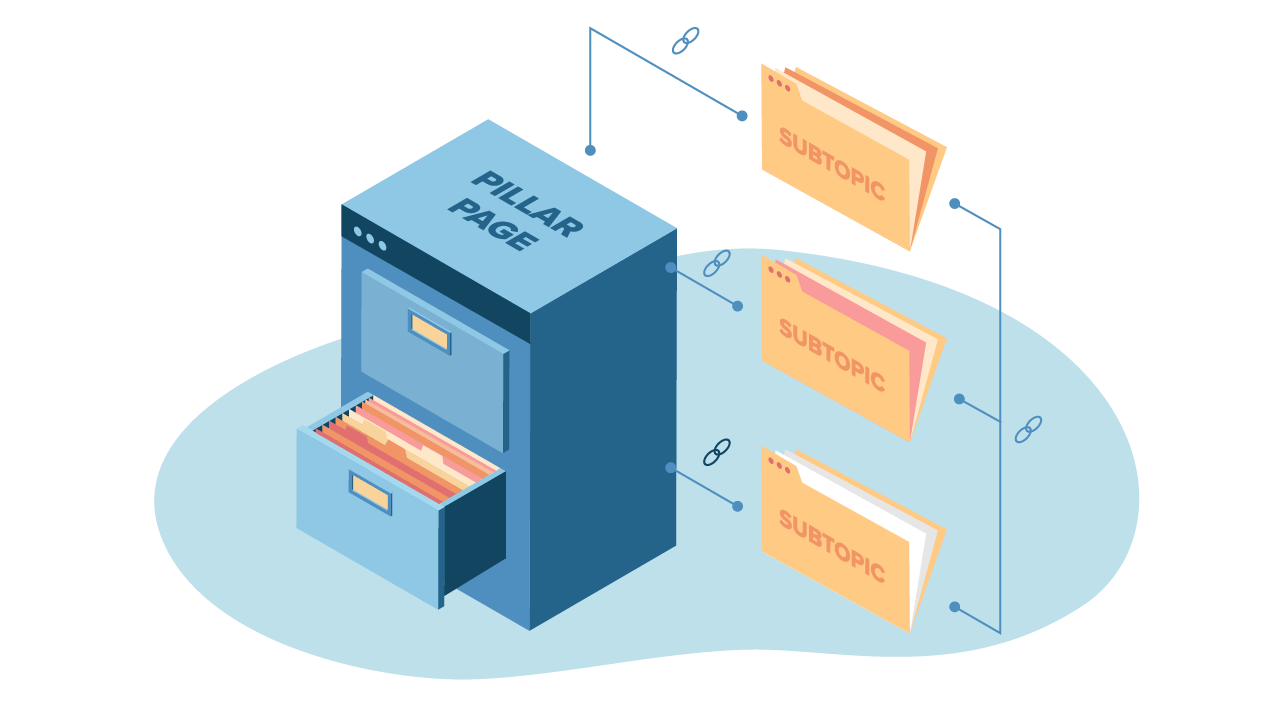Front Porch Solutions Named 2022 Best of Ohio Award Winner
Read more to learn why Front Porch Solutions is award winning!
Content marketing trends come and go, but topic clusters are not disappearing any time soon. And for a good reason! If your business publishes blog content, and it should, you must be organizing your content in a way that is helpful for your readers. There should be a flow to your content that guides a person to other relevant and useful information that your company has to offer.
So, what is cluster content, specifically? It’s one of three steps within the topic cluster strategy and, when put together, they can optimize your site content and search engine rankings.
Cluster content was defined by HubSpot researchers in 2017 as a new tactic for increasing the efficiency of SEO strategies. This strategy focuses on topic-based content, meaning you choose a broad topic that you or your brand would like to be known for and work to answer relevant questions your audience may have about that topic.
The topic cluster model in content marketing consists of three key components:

1. Pillar page
You can use your brand’s business goals to determine the core topics for your pillar pages. Brainstorm potential topics by thinking about your business’s industry, mission, and objectives and how your products or services fit into the life of your buyer persona. Identify the common topics tying your answers together and develop them into your pillar content.
2. Cluster content
Your customers’ pain points regarding your core topics will become your subtopics. You should incorporate other SEO tactics, like keyword research, at this stage to increase your chances of ranking on search engine results pages or SERPs. The cluster strategy doesn’t just apply to new content. If you have existing content already, add it to your pillar pages when appropriate.
3. Internal links
To get the full SEO benefits from the cluster content strategy, you must add internal links to your new piece of content. Adding backlinks to the pillar page and other cluster pages helps search engine crawlers quickly scan your content and identify your web page as an authority in that area. Be sure to use relevant anchor text and only hyperlink high-quality content that you can reasonably assume would improve user experience. Google will penalize web pages that use excessive and unnecessary links.
The idea behind clusters of content is that interlinking your content together will help your pillar page rank higher and higher for its specific topic on SERPs over time.

Google’s “neural nets” tool, launched in 2020, allows their search engine crawlers to understand subtopics. These neural nets can identify a range of content related to a broad topic or question used in a search query. So, suppose a searcher uses a word associated with the main topic of one of your pillar pages, and you’ve written ample subtopic articles. This preparation gives your content a better chance of being delivered to them.
Additionally, Google has recently added another feature to their algorithm that improves the flow of their search engine. It can now understand how people typically explore search topics and what aspects people are likely to look at first. This feature does more than deliver related topics. Google uses what it knows about search intent and behavior to predict what path a user will take as they conduct research.
Scheduled to begin rolling out is a new section in the Google SERP similar to the “People also ask” list. This new section called “Things to know” delivers useful and relevant content based on the original search term. If you’ve been very thorough when creating cluster content by answering the famous Five W’s (who, what, when, where, and why, and how) and hyperlinking to other articles on your pillar page, then your content has a good chance of being found by these new features.
Publishing exceptional, keyword-rich content to your website is crucial for achieving healthy organic traffic. Take it one step further by organizing that content into topic clusters, and you’re well on your way to ranking for your desired keyword or area of expertise. If you’re not sure where to get started, need guidance on choosing pillar topics, or don’t have time to create content of your own, we can help. Reach out to one of our content creation experts today to help you attain the results you want.
Fill out the form and we’ll be in touch as soon as possible.